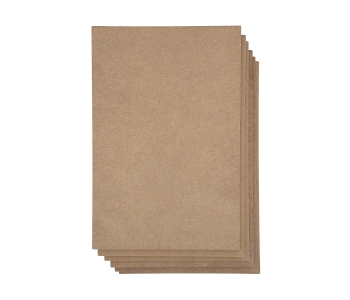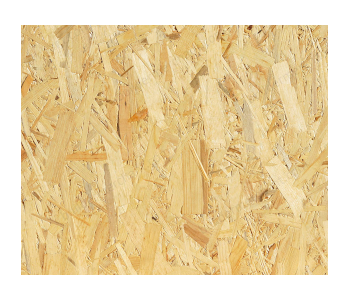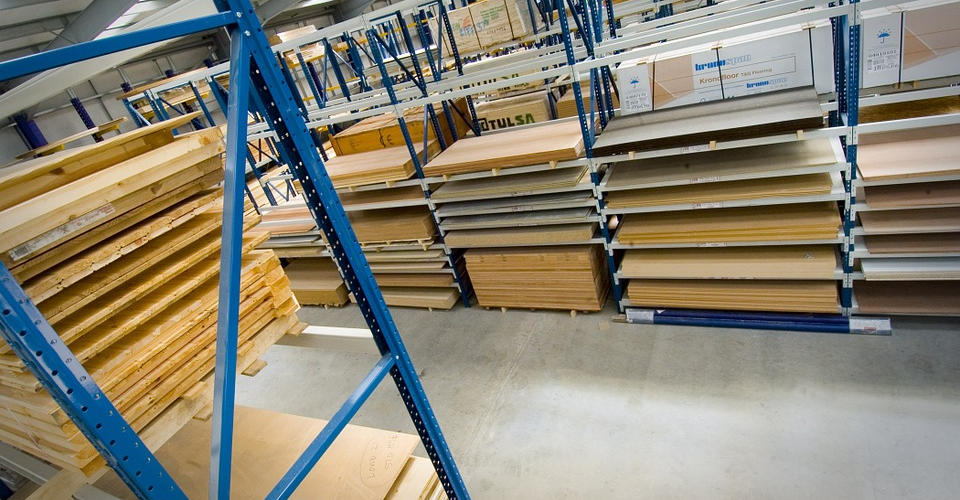5 Best Lightweight Plywood Substitutes
Plywood – everybody knows what it is, what it looks like, and probably has it in their homes. Plywood has been a staple of construction projects and furniture because of how inexpensive and versatile it is. It can be easily cut down to size, nailed to a frame, or bonded with an adhesive.
Despite the ubiquity of plywood, there’s no material that cannot be replaced, especially with all the modern manufacturing methods we have nowadays. Why would you want to replace plywood anyway? If so, what are the best available substitutes for standard plywood?
Plywood and its pros and cons
Plywood is so-called because it is made of thin layers of wood veneer or “plies.” These layers are glued together to achieve the desired thickness. The adhesive used to bind these layers together is typically made of resin, the specifics which vary from one plywood to another. The wood used in plywood layers can also vary depending on the desired characteristics of the final product.
To enhance the durability and consistency of plywood, the grain of each layer is oriented in a different direction. Not only does this make plywood resistant to splitting, but it also enhances dimensional stability so that it doesn’t expand or shrink significantly when exposed to different conditions.
PROS
1. Easy to find
One of the best things about plywood stems from the fact that it’s one of the most popular construction materials around. You can find plywood in just about any hardware store, and there’s a good selection of different varieties available. If you need quickly procure materials for a shelf or interior partition, then plywood is still a solid option.
2. Cheaper than solid wood
The fact that plywood is made of different types of wood means that it’s possible for it to be made of both high-grade and inexpensive types of wood. Compared to a similarly sized slab of solid wood, plywood will almost certainly be much cheaper. It is exactly these more economical characteristics that have proven to be one of the major reasons behind the popularity of plywood.
3. Versatile
Right now, you can pick a plywood product based on how thick you need it to be, whether you want it to be flexible or rigid, or according to the finish you’re looking for. Compared to slabs of solid wood, plywood sheets can be made much larger. Plywood sheets can easily be cut down to the size and shape that a construction project requires.
CONS
1. Prone to water damage
Despite the resistance of plywood to expansion or shrinkage, prolonged exposure of plywood to water will almost certainly result in the sheets coming apart. Although water-resistant variants are now available, plywood still wouldn’t be our material of choice for applications that are regularly exposed to a lot of moisture.
2. Not as strong as solid wood
Plywood may resort to different measures to enhance its durability, but it still cannot compare to the strength of a solid slab of wood. Choosing plywood is pretty much a decision of compromising on strength for the sake of a lighter and cheaper material.
3. May be environmentally harmful
The traditional methods of bonding the wooden veneers together to create plywood made use of formaldehyde-based adhesives which have been proven to be harmful to the environment. Nowadays, however, most plywood sheets are made with more environmentally friendly phenolic resins. If you’re concerned about sustainability, then this is a matter you need to look into when you buy plywood.
Top 5 best plywood substitutes
There are a handful of materials being used nowadays in place of plywood. However, none of these are perfect substitutes, which is the reason why plywood hasn’t exactly lost a lot of popularity. Still, these substitutes may appeal to you based on their unique benefits.
1. Polyurethane board
In terms of sheer contrast with plywood, a polyurethane board has to be the most radically different plywood substitute. Since it’s made with plastic, it is not susceptible to water damage or splitting due to moisture absorption. It’s also remarkably lightweight and can have comparable durability if reinforced with fiberglass. The reinforced polyurethane board is just as suitable for structural and semi-structural works as any piece of plywood.
Polyurethane boards can also be cut down to any desired shape or size using standard woodworking tools. They are sold in standard-sized sheets and have different density variants. Since polyurethane doesn’t absorb moisture, they are easier to apply adhesives compared to wood.
The only thing you’re going to miss when you resort to polyurethane is the visual appeal of the characteristic wood grain of plywood. Although it’s possible to “cheat” with an artificial finish, nothing compares to the real thing.
2. Medium-density fiberboard (MDF)

MDF is another type of manufactured wood board made by binding together fibers of wood. Since these are essentially recycled materials, MDF is both a more environmentally and economical alternative to plywood. Since MDF no longer has any wood grains, it does not contract or expand due to changes in temperature or humidity. It’s also generally safe from termite attacks because of the chemicals used in its manufacturing process.
Working with MDF is just as easy as working with plywood. It readily accepts paint and adhesives and is very easy to cut into shape and size. If you want your project to have a characteristic wood grain finish, then you can just as easily set a plywood layer as an outer surface.
Although MDF is a fairly durable material, it still compares rather poorly to plywood. Since the wood fibers don’t provide any structural integrity, the strength of MDF relies largely on the type of resin used to bind the fibers together. This means that you can expect different MDF products to have vastly different physical properties.
3. Particle board

If MDF boards are still out of your budget range, then you can go to the absolute cheapest option – particle boards. As you can surmise from its name, a particle board is a lot like an MDF board, except that it’s made from wood particles instead of wood fibers. Much like MDF, particle boards are also a more environmentally friendly option compared to plyboards because they use recycled materials. They are also lighter than both plyboards and MDF boards
There are two major issues with particle boards that may not make them suitable for a lot of applications. The first is that they have very low structural integrity. Particle boards may look good because they have this characteristic wood particle finish, but they are mostly used for aesthetics and not for structural objects. You might still be able to come up with tables and cabinets using a particle board but building a wall with particle boards would be unwise.
The second disadvantage of particle boards is that they have an inherently rough surface that doesn’t take post-processing techniques well. Most projects that use particle boards choose to retain their original finish simply because paint on a particle board doesn’t look so good. The best you can do is do staining on the particle board, giving it a nice sheen and a smooth finish.
4. Oriented strand board (OSB)

An OSB is a good middle-ground board that is a balanced compromise between plywood and MDF boards. Instead of loose wood fibers or particles, OSB is made from strips of wood of varied sizes that oriented strategically and bound together.
Making an OSB board takes more than just applying an adhesive to these strips of wood. Although the strands are still considered wood scrap products, they are processed through specific methods to make them suitable for creating OSB boards.
Most wood used for OSBs comes from fast-growing species of trees, which makes them more sustainable. The scraps that come from woodcutting activities are organized and classified according to size, and then dried and treated with wax or resin. These are then arranged into sheets and subjected to high pressures and temperatures to form rigid panels.
OSB is considered a more economical alternative to plywood which retains most of its structural benefits. It’s consistently strong, is less prone to warping, and even has better water resistance than plywood. Best of all, the manufacturing of OSB typically relies on non-formaldehyde resins or adhesives, so you can be sure that it’s an environmentally friendly product.
5. EKO Ply recycled materials board
Of all the plywood substitutes we have mentioned here, a board made of recycled materials has to be the strangest. What makes these recycled board products, such as EKO Ply, hard to describe is the fact that their manufacturers often don’t disclose exactly what materials go into the products. They do say that they use 100% recycled materials, so we’ll just have to take their word for it that these are particularly environmentally friendly alternatives.
The EKO Ply sheet is one of the more popular examples of this product. It claims to be sturdier and more durable than standard plywood, not to mention being virtually impervious to water damage, natural rot, and corrosion.
EKO Ply has this unusual but characteristic look defined by streaks of gray with a few patches of color. Although the color scheme may seem gloomy, it also makes EKO Ply sheets immune to being vandalized. This means that EKO Ply is a no-maintenance material that is uniquely suited to municipal projects and youth centers that are usually rife with graffiti.
EKO Ply is just one of several recycled board products out in the market today. We also don’t guarantee that it’s the best one, as we assume that all these brands use their own signature process and set of recycled materials.
Final thoughts
Even if plywood remains the king of wooden construction panels, it’s still liberating to know that there are perfectly viable alternatives out there. Through some inventive use of wooden scraps, special plastics, or recycled materials, these plywood alternatives have been able to bridge the gaps that plywood cannot fill in.
Whether you’re looking for something that’s a bit cheaper or something that has a better resistance against moisture, you no longer need to limit your options to good old plywood. That’s not to say that plywood is going to fade into irrelevance – that is still a very remote possibility.


With the skyrocketing price of plywood subflooring, could one of these be used in its place?